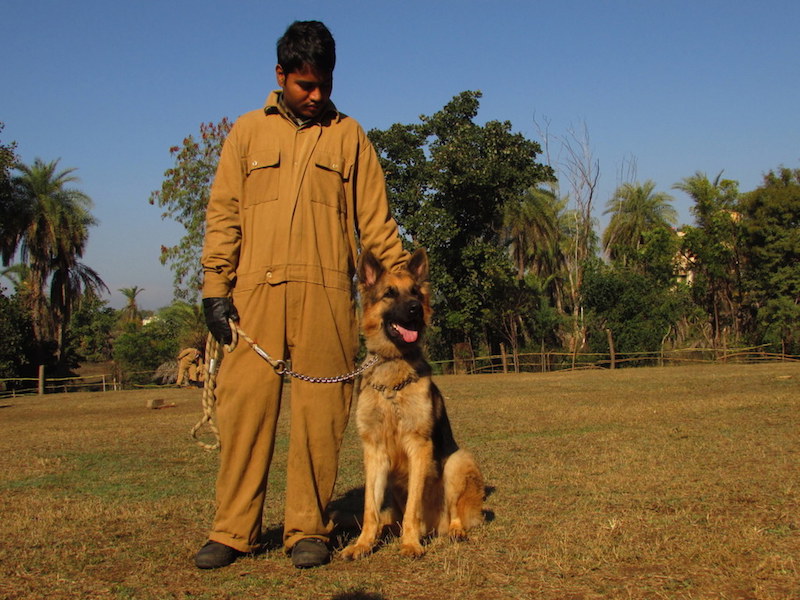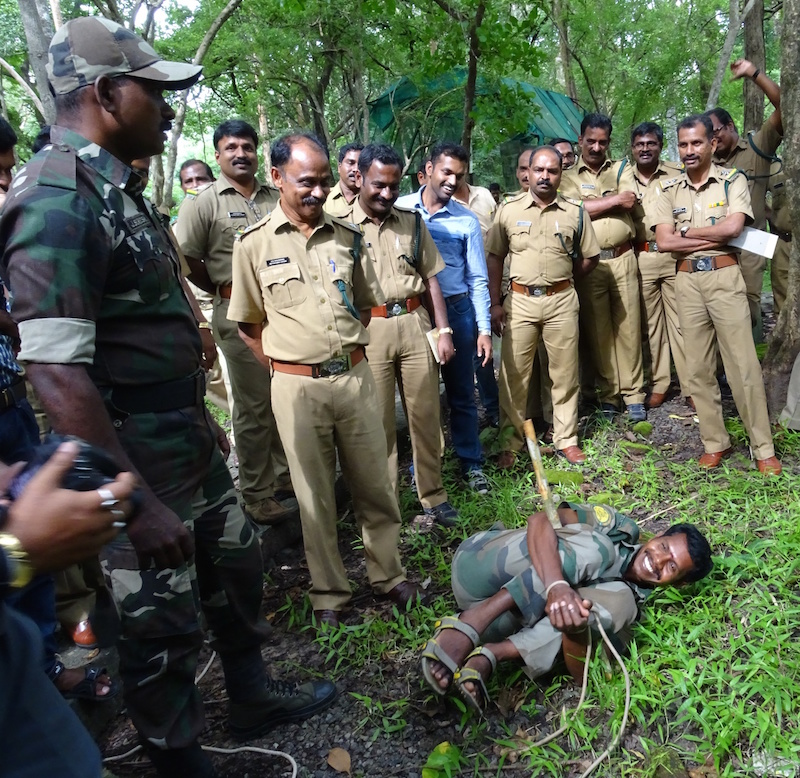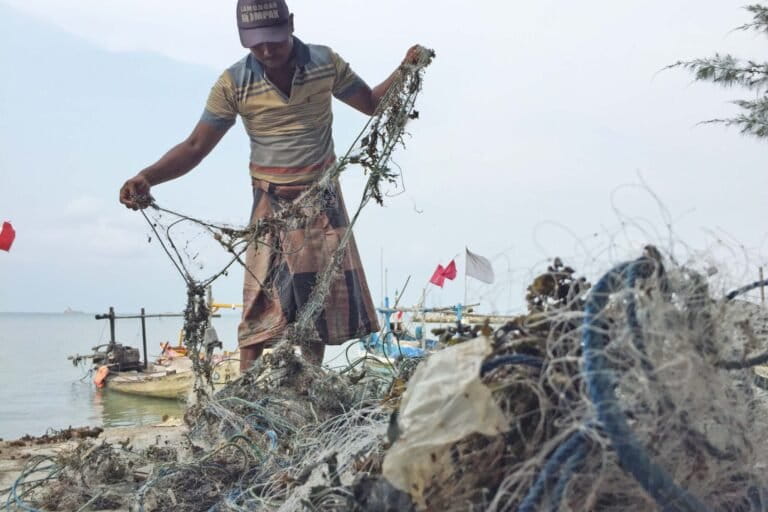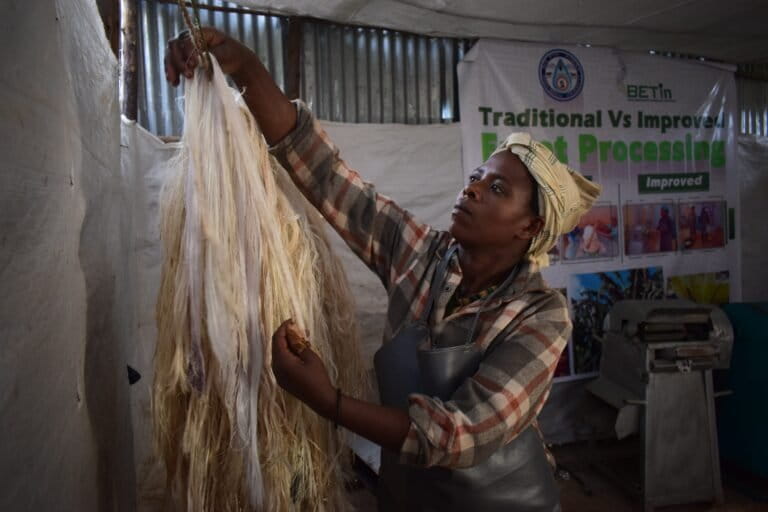- This summer India’s team of wildlife-contraband-sniffing dogs grew to 25.
- Other measures to combat the country’s significant black-market trade in wildlife include a new emphasis on training law enforcement officers to fight the illegal trade and forestry personnel to guard against poaching.
- While the efforts do not appear to be part of a larger initiative to combat wildlife crime, experts say they indicate that the country is beefing up its wildlife-crime-fighting capacity.
In June, a unique graduation ceremony was held in the city of Bhopal in central India. Fourteen dogs and their 28 handlers performed brief drills to display their newly acquired skills at detecting illegal wildlife products during a parade held at the 23rd Battalion of Special Armed Reserve Forces’ Dog Training Centre.
The 14 newly trained wildlife protection and anti-poaching squads would soon join India’s 11 existing dog squads to sniff out wildlife contraband across the country. The ceremony was attended by representatives from seven “tiger states” home to significant populations of wild tigers (Panthera tigris), which are subject to intense poaching and international trade, including Assam, Jharkhand, Karnataka, Madhya Pradesh, Maharashtra, Tamil Nadu, and Uttarakhand.

In addition to the new dog squad recruits, India has stepped up other measures to combat its significant black-market trade in wildlife, which has been poorly documented and loosely enforced. The measures include a new emphasis on training law enforcement officers to fight the illegal trade and forestry personnel to guard against poaching. While the efforts do not appear to be part of a larger initiative to combat wildlife crime, and data on the number of arrests and convictions remain scarce, experts say they indicate that the country is beefing up its wildlife-crime-fighting capacity.

Globally, the international wildlife trade is worth up to $23 billion annually, according to Interpol. Comprehensive estimates of the number of animals trafficked in India or the annual value of this illegal trade are unavailable, and officials at the national Wildlife Crime Control Bureau (WCCB) who were contacted for this story declined to provide data.
Nonetheless, some available statistics offer a glimpse of the scale of the problem. India’s National Crime Records Bureau released data in August showing that 770 cases of wildlife crime were recorded nationwide in 2014, leading to 1,349 arrests. (These cases were all violations of the federal Wildlife Protection Act of 1972.)
According to statistics from the NGO the Wildlife Protection Society of India, 18 tigers were killed by poachers or their body parts were recovered from traders so far in 2015; 23 were killed in 2014. For leopards (Panthera pardus), the number stands at 102 this year so far and was 116 last year.
In addition to tigers and leopards, India’s most iconic trafficked species include the Indian rhino (Rhinoceros unicornis), Asian elephant (Elephas maximus), and sloth bear (Melursus ursinus). Wildlife crime involving such megafauna tends to attract more media and public attention than that related to smaller, less glamorous species, according to Ramesh Pandey, a government employee and consultant on matters of wildlife-crime intelligence and enforcement who used to work at what is now the government’s WCCB.

“By and large, people know about wildlife crime of megafaunal species but that is the tip of the iceberg,” Pandey told Mongabay. “We hardly look at wildlife crime related to smaller species [like] pangolins, mongoose, and marine species like sea cucumbers, etc.”
Domestically, wildlife trade is fairly limited and crime tends to be unorganized, such as the hunting of wild animals for local consumption or ceremonial use. By contrast, wildlife crime feeding into international markets is highly organized and of significant concern, Belinda Wright, executive director of the Wildlife Protection Society of India, told Mongabay.
“India is a source country for illegal wildlife products destined for markets abroad — mainly China — for oriental medicine and [Traditional Chinese Medicine] tonics, and home décor,” Wright said in an email. “The major species targeted by this trade are tigers, leopards, other wild cat species, otters, bears, musk deer, elephants, rhinoceroses, and pangolins. The illegal trade in these species is highly organized and stretches across both state and international borders.”
Trade in India also reflects international trends, according to Shekhar Kumar Niraj, the head of TRAFFIC India, a wildlife trade-monitoring network that is a division of the conservation group WWF India. “Demand for ivory has increased and whenever the demand for African elephant ivory increases, there is a corresponding increase in poaching in India of elephants,” Niraj said. “That is a dangerous development.”
Another animal du jour on international markets is the pangolin, the eight species of which are today the world’s most poached mammals. They are hunted for their scales, which are purported to have medicinal value in Traditional Chinese Medicine, and sometimes for their meat. Wright and Pandey both said that since 2009 there has been a significant increase in the poaching of India’s two pangolin species, the Indian pangolin (Manis crassicaudata) and the Chinese pangolin (Manis pentadactyla), with some 3,350 animals poached between 2009 and 2013, according to WWF India.
Combating wildlife trade has proven difficult for the Indian government and conservation NGOs. An ineffective and cumbersome intelligence-gathering mechanism and a lack of monetary resources and modern equipment, combined with the absence of anti-trafficking and anti-poaching tools, manpower, vehicles, and skilled enforcers has weakened wildlife crime investigations in India, experts say. The relatively lenient legal punishments for these crimes and a low level of priority on a state and national level so far have failed as deterrents, leaving India’s wildlife habitats vulnerable.
New tools to combat wildlife crime
TRAFFIC India pioneered the training of the sniffer dogs for wildlife protection in India back in 2008. The group trained 13 dog squads over a period of four years, but after some initial setbacks it approached the program with renewed vigor in 2013. By the end of June this year, a total of 25 anti-poaching dog squads, including the new recruits, were deployed in nine states across India.
TRAFFIC India head Niraj, who is also an officer with the Indian Forest Service, said these sniffer dogs can be a very significant anti-poaching and anti-trafficking tool because of their powerful sense of smell, ability to search large areas, and usefulness in leading enforcement officers to consignments of illegal wildlife products.
The idea behind the program is to modernize methods of detecting wildlife crime and trafficking, Niraj said. Countries like the US, China, Nepal, Russia, and even the Republic of Congo are among those that use sniffer dogs to combat wildlife trafficking and poaching. The dogs can help collect credible, admissible evidence that can improve prosecution and conviction rates, he said. And that, in turn, can offer a psychological deterrent to wildlife traffickers.
Wright sees great promise in the sniffer-dog program. “I think it is an excellent idea. Provided the dogs are well-trained and properly looked after, sniffer dogs could prove very useful for the detection of offences. For instance, traditional tiger and leopard poachers use India’s railway network extensively to transport skins and bones. These dogs could be used to comb trains at railway stations near tiger reserves and known trade hubs,” she said.
The sniffer dog program is not yet at an optimum level, but the program is already proving its worth, Niraj said. Since its 2008 inception, dog squads have cracked 130 major cases of wildlife crime. And on June 30, after nine months of training, one new dog squad deployed in the state of Madhya Pradesh’s city of Indore caught a consignment of illegal wildlife products on their very first day on the job. The dog, named Myna, and her handler were conducting a routine check near a historic palace in a busy shopping district and uncovered a consignment of leopard claws, deer meat, deer skin, jackal skin, and a jackal skull that led to the arrest of two women.

In addition to the dog squads, TRAFFIC India and WWF, in partnership with Indian government agencies, have recently strengthened their training programs for law enforcement officers and forest personnel.
In August this year, TRAFFIC India, along with the WCCB and the Parambikulam Tiger Conservation Foundation, conducted an enforcement capacity-building workshop in the Parambikulam Tiger Reserve in the state of Kerala. More than 55 enforcement officials from various forestry divisions, the Kerala Police, and the state’s Customs and Central Excise department attended the training. The purpose was to better equip the officials to handle cases of wildlife crime, teaching them how to use the latest technology and tools and how to identify snares and traps set in the forest by poachers. The attendees were to pass on the knowledge to colleagues in their specific divisions of law enforcement.

The Parambikulam workshop was one in a series, Niraj said. Each year, the number of workshops has increased and seven or eight now take place across the nation every year, targeting areas that are particularly vulnerable to poaching and illegal trade, such as areas close to the border, he said.
These exercises help improve coordination between agencies, said Niraj, who credits them with first alerting Indian law-enforcement to the booming trade in pangolins. “We get feedback on these workshops so we know that they are working, Niraj said. “They are very comprehensive and have been very effective.”

A similar training effort focuses on forestry officers in the state of Tamil Nadu. In August, over 200 personnel from seven forest divisions were trained in patrolling, jungle survival, self-defense, and combat strategy at a workshop in the Sathyamangalam Tiger Reserve. This, the second such training exercise held in two years by WWF India in sync with local forest department officials, now puts the number of trained forestry officers in Tamil Nadu — called Anti-Poaching Watchers — at over 400.
According to news reports, starting this spring the increase in wildlife crime involving lesser-known species like pangolins will now be tracked by Interpol in partnership with the WCCB. The agencies will collaborate to gather intelligence, identify wildlife crime syndicates, and make arrests.
The WCCB refused to provide data that might show whether the current efforts are helping reduce wildlife crime or comment on the country’s overall wildlife-crime-reduction strategy. Nevertheless Niraj said the increased trainings for law enforcement and forestry officers and the new-and-improved sniffer dog program show that the country has become more serious about wildlife crime.
A long way to go
Still much remains to be done, experts say, starting with crafting stronger laws. For one thing, India has no legislation that allows the enforcement of the Convention on International Trade in Endangered Species of Wild Fauna and Flora (CITES) beyond entry and exit points like airports, Pandey said. This means that law enforcement officers cannot seize a species whose trade is prohibited under CITES from an Indian city and ask the perpetrator where they got it from. “An amendment to solve that was put forth in Parliament two or three times but it didn’t go through,” Pandey said.
And despite the welcome new capabilities, the enforcement of existing laws still needs improving, Wright said. She added that addressing the demand side of the equation is also extremely important. “Since these efforts have to largely take place in other countries, I think the Indian government should engage with the consumer nations on this issue as part of its foreign policy,” she said.
At a time when international wildlife crime is occurring on a formidable scale and decimating wild populations of indigenous and endangered species, coordination among nations is key to tackling this problem. The United Nations General Assembly adopted its first-ever resolution on wildlife trafficking in July this year encouraging countries to “adopt effective measures to prevent and counter the serious problem of crimes that have an impact on the environment, such as illicit trafficking in wildlife and wildlife products…as well as poaching.”
In the face of global urgency to combat wildlife crime, India’s efforts seem to be taking it down the right path
Citations
- Nellemann, C., Henriksen, R., Raxter, P., Ash, N., & Mrema, E. (Eds.) (2014). Environmental Crime Crisis: Threats to Sustainable Development from Illegal Exploitation and Trade in Wildlife and Forest Resources. United Nations Environment Programme and GRID-Arendal, Nairobi and Arendal.
- Nature, C. (2013). The Global Security Implications of the Illegal Wildlife Trade. International Fund for Animal Welfare, Yarmouth Port, Masachusetts.













